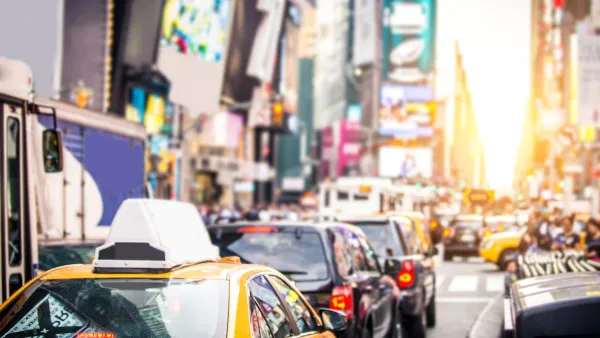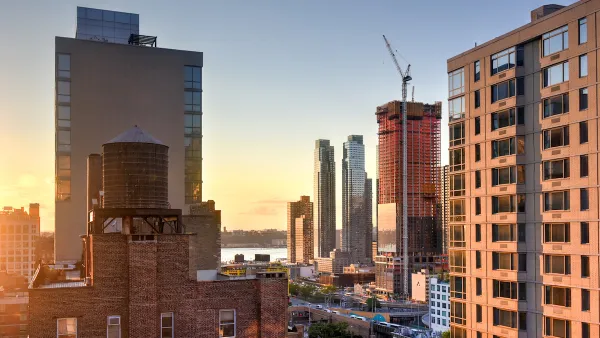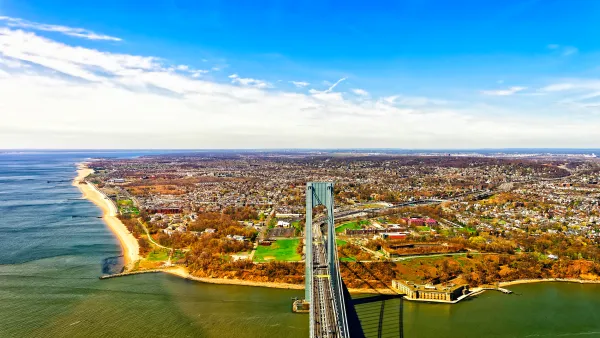A new exhibit at the Museum of the City of New York provides an opportunity for reflection on what Rem Koolhaas once called "the most courageous act of prediction in Western civilization."
On the 200th anniversary of its creation, Manhattan's Grid is being celebrated and contemplated in a new exhibition titled "The Greatest Grid: The Master Plan of Manhattan, 1811–2011" (on view through April 15). In two thoughtful pieces in The Architect's Newspaper and Metrpolis, Phil Patton and Karrie Jacobs reflect on the exhibit, and inevitably turn to an evaluation of the pros and cons of the grid itself, furthering an ongoing discussion taking place in the pages of Planetizen.
For Jacobs, "Manhattan's grid-the reliable network of numbered streets (20 to the mile), and the more widely and irregularly spaced avenues-is the city as God intended it. Of course, there's nothing remotely natural about it."
Jacobs goes on to ruminate about the grid's encouragement of creativity and contradiction. "The grid is actually more accommodating than it appears. While it has reined in the size and, to a certain extent, the shape of Manhattan's buildings, the grid has motivated developers, architects, and planners to either subvert or compensate for it...Happily, the grid's consistency is frequently offset by anomalies."
Patton dismisses complaints about the failure of the grid to provide for the veneration of architecture with an ode to democracy, "a city without a central cathedral or palace was more a democratic society and, in a city without a center, anywhere could be central."
He sees as a failing of the exhibit its inability to, "bringing into the gallery the sense of the grid as perceived on the street or in the popular mind....How to represent the mesmerizing quality of the short blocks that make people walk farther than they plan, or the flickering passage of street numbers in a taxi window, like shuffling cards?"
FULL STORY: Review> Net Advantage

Analysis: Cybertruck Fatality Rate Far Exceeds That of Ford Pinto
The Tesla Cybertruck was recalled seven times last year.

National Parks Layoffs Will Cause Communities to Lose Billions
Thousands of essential park workers were laid off this week, just before the busy spring break season.

Retro-silient?: America’s First “Eco-burb,” The Woodlands Turns 50
A master-planned community north of Houston offers lessons on green infrastructure and resilient design, but falls short of its founder’s lofty affordability and walkability goals.

Test News Post 1
This is a summary

Analysis: Cybertruck Fatality Rate Far Exceeds That of Ford Pinto
The Tesla Cybertruck was recalled seven times last year.

Test News Headline 46
Test for the image on the front page.
Urban Design for Planners 1: Software Tools
This six-course series explores essential urban design concepts using open source software and equips planners with the tools they need to participate fully in the urban design process.
Planning for Universal Design
Learn the tools for implementing Universal Design in planning regulations.
EMC Planning Group, Inc.
Planetizen
Planetizen
Mpact (formerly Rail~Volution)
Great Falls Development Authority, Inc.
HUDs Office of Policy Development and Research
NYU Wagner Graduate School of Public Service




























